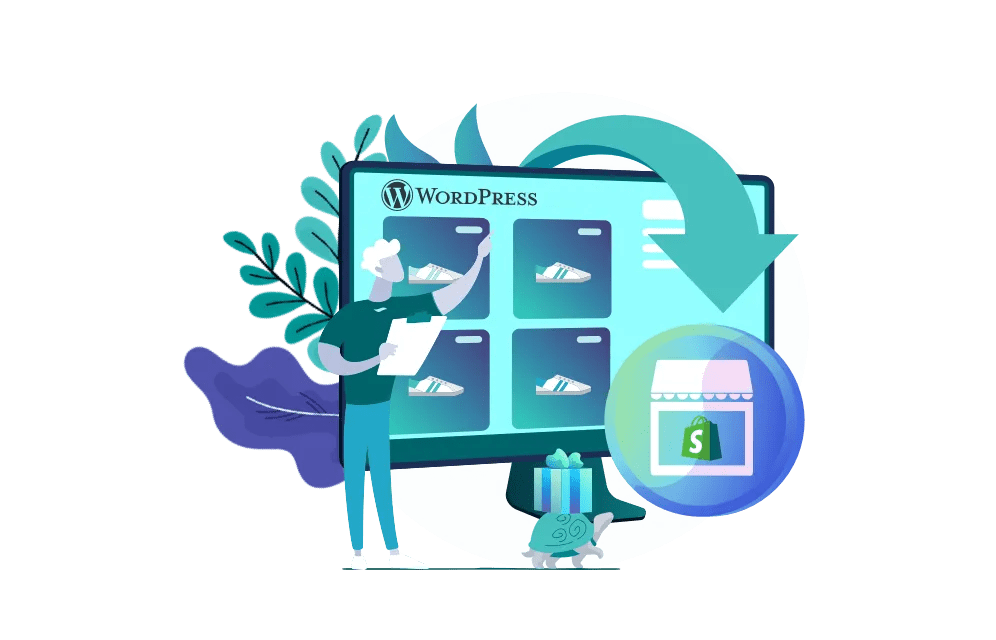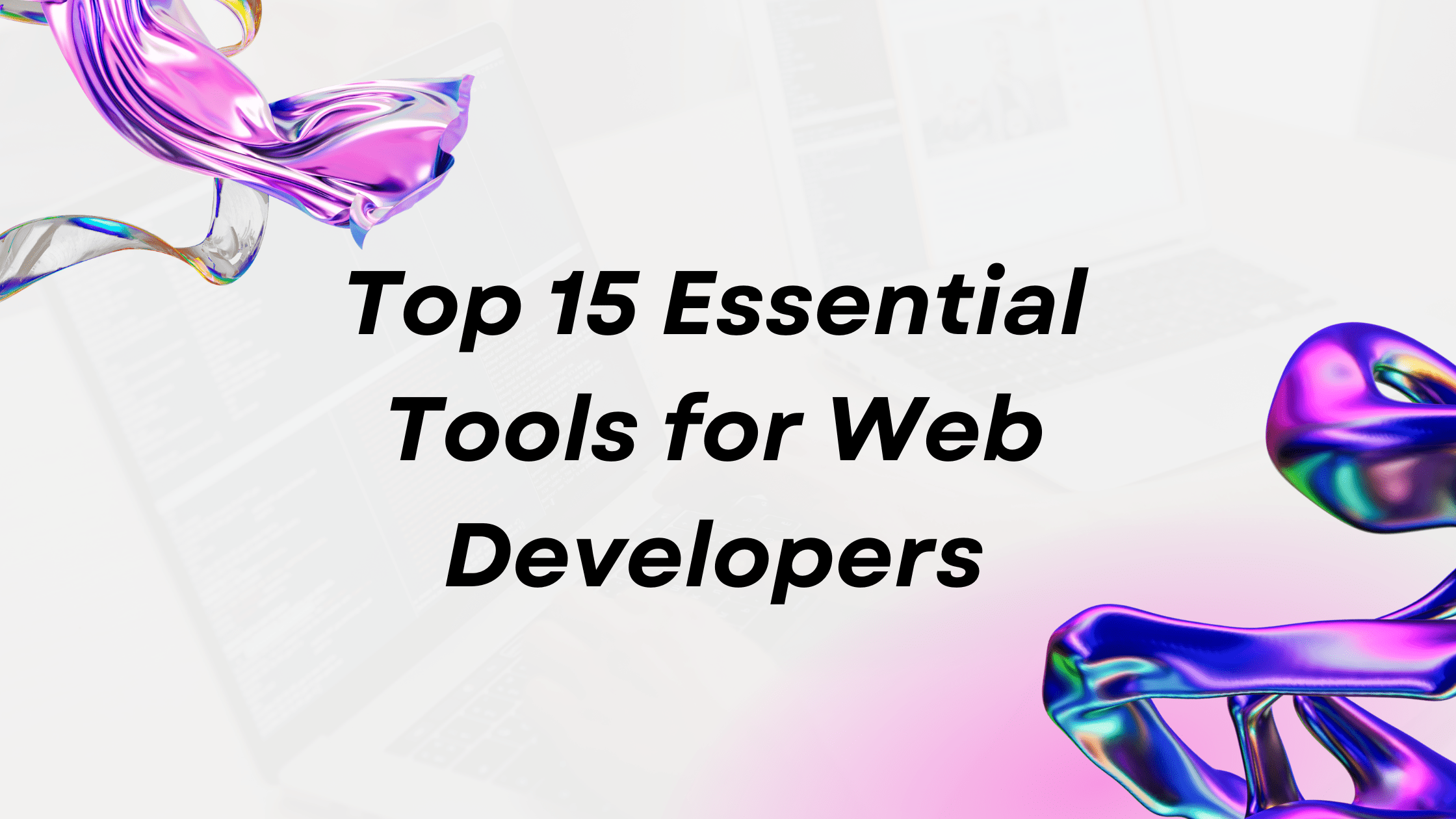Are you looking to migrate the WordPress site to the Shopify platform?
Need help migrating pages, data, and blogs from WordPress to Shopify?
With this straightforward step-by-step guide, let us tell you how easy it is to migrate the data from WordPress to Shopify.
In this tutorial, we will walk through the detailed steps for the WordPress to Shopify migration, pre and post-migration tips and tricks, and why it is the right decision to migrate from WordPress to the Shopify platform. So, let’s begin.
WordPress has been one of the most popular CMS platforms for a long time. It is easy to use and understand, with many features and functionalities. WordPress offers a clean backend, a basic dashboard, and a range of navigation options to access. Organizations using WordPress worldwide.
Whereas,
Shopify is an eCommerce platform that offers several functionalities for making an online storefront. Its numerous features and third-party integrations make this platform a unique choice for building an online store. You can also migrate on the Shopify platform from any other CMS easily.
Here we will talk about the migration process and the pre /post tips while migrating from WordPress to Shopify.
Pre-WordPress to Shopify Migration Tips!
When you are ready to migrate from WordPress to Shopify, a few considerations will help you for a smooth migration process. Let’s discuss this in detail.
- Data Backup
Taking a backup of your data before embarking on the migration is necessary. You can take a backup manually or via WebHost itself.
- Custom Collections
Custom collection data is generated in the WordPress category. It is challenging to migrate all collective data from WordPress to Shopify because it takes time and effort and needs to be executed manually. If you are facing any issue or find it challenging you can hire Shopify experts, they will do it efficiently and hassle-free.
- Index Streamlining
WordPress product category URLs can be different in Shopify after migration. It is advisable to make sure that you create redirects for each product wisely. It is suitable for search engines to identify the items and index them.
7 Steps of WordPress to Shopify Migration
- Select Shopify Theme
When you start to migrate from WordPress to the Shopify platform, it is required to choose the appropriate theme design. Select the configuration that reflects your business purpose. As a newcomer, you will have the default theme design. You can select the theme from the Shopify free and premium theme store. Also, Shopify offers customization options for customers. You can customize the theme as per your business requirements.
- Setup Source Cart and Target Cart
Choose WordPress as a source cart and Shopify as a target cart. Select the source and target cart from the dropdown list to excel this setup. After entering the store URL, follow the brief instructions list and set up the carts process.
- Data and Content Transfer
Select the data and the content you wish to migrate to the Shopify platform, including your products, product categories, customers, order details, and everything you need to get on Shopify.
Data transfer is the most significant part of the migration process because your data and the content are the framework of your storefront. It can consume your time and effort as well.
You can leverage the professional experts of WordPress to help the WordPress to Shopify migration process, who can take care of all your significant data and migrate it to Shopify smoothly.
- Post Migration Product Check
A post-migration checklist is imperative to avoid any unwanted mistakes. Check all product details, including descriptions, meta titles, images, and variants. You can track all your product lists via the product inventory app available in the Shopify app store.
- Shipping Setup
Shopify offers automated calculations of taxes and shipping charges. As it is one of the biggest wins for Shopify, with few adjustments, Shopify will be able to handle all shipping and taxes for you. Make sure to add accurate customer information to avoid overcharging and accurate results.
- Payment Gateway Setup
Setting up the payment gateway after migration is required to receive payment. From choosing the payment providers to the store’s checkout, complete the setup with the Shopify merchant dashboard.
- Trial Run
It’s the last and the final stage, where you must test all your store data and set it up if found any issue. This act ensures that either all migrated data and URLs work smoothly or not. In case of any glitches, at this stage, you can fix them immediately before the store’s launch.
Post WordPress to Shopify Migration Tips!
Post-migration tips help you to chop and check the entire process and get done with the Shopify migration from WordPress effortlessly.
- Shift Your Domain
Moving the old domain with the new one is one of the mandatory steps in the post-migration process. All you need to do is unlock your domain setting. For this login from a third-party domain setting and set it up where you want to switch to. Confirm all the changes via email.
- URLs Testings
Check all the transferred URLs from your WordPress to Shopify and confirm they work correctly. Make sure Shopify’s URLs are redirected to the old URLs.
- Rich Snippet
Adding rich snippets to your Shopify store makes it easy to improve search rankings comparatively with regular search results. They are productive in generating a higher CTR (Click-through Rate).
Get hassle-free WordPress to Shopify migration services with us.
TRooInbound is the fastest-growing organization and offers services like WordPress to Shopify migration and any other CMS migrations. The organization has more than 200+ skilled staff of developers and digital marketers.
Suppose you are seeking migration services, website development services, application development services, marketing services, and eCommerce development services. You can connect us via mail or the Contact Us page.
Migrate to the Shopify Platform With a Skilled Workforce in No Time.










